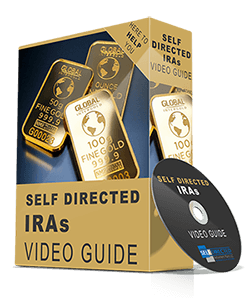Self-Directed Real Estate IRA
What is a Real Estate IRA or Self-Directed
IRA Real Estate?
A “Real Estate IRA” is a self-directed IRA, which primarily focuses on real estate investments. A Self-Directed Real Estate IRA allows you to invest your retirement funds in different types of real estate and real estate-related assets.
Types of Real Estate You Can Invest in
With a Self-Directed IRA
- ResidentialThe most common types of real estate found in self-directed IRAs are single-family homes and multi-family units. Rental income is generated by renting these properties.
- CommercialCommercial property is another great way to generate long term rental income. The real estate investments include a broad range – from a grocery store, an office building to a baseball field.
- Mortgage NotesMortgage Notes are an indirect way to invest in real estate. You are a real estate lender who uses your savings to help others purchase homes while making a profit for yourself.
- Offshore Real EstateOffshore real estate investments are for investors who want the freedom to invest in foreign real estate markets and to take the tax benefits associated with overseas investments.
- Real Estate Owned PropertiesReal estate owned (REO) properties are foreclosed properties that have been taken back by the bank. You can use your self-directed IRA to buy these properties from the bank or the auctions.
Other real estate investments that are allowed with a Self-Directed IRA are:
- Apartment Buildings
- Condominiums
- Building Bonds
- Commercial Paper
- Foreclosures
- Improved or Unimproved Land
- Joint Ventures
- Leases
- Limited Partnerships
- Tangible Asset Deeds
- Tax Lien Certificates
- Trust Deeds
- Limited Liability Companies (LLCs)
How to Buy Real Estate With a Self-Directed IRA (SDIRA)?
Investing in alternative assets like real estate with your self-directed IRA is similar to a regular real estate purchase. However, there are certain rules and processes you need to follow to do it correctly. Here’s the process of buying real estate with a self-directed IRA:
Open and fund an SD IRA account.
Use a qualified self-directed IRA custodian to do this.
Find a property to purchase.
Do your due diligence to identify the property you want to invest in.
Direct your custodian to fund your investment with your account.
Give the specifics of the property to your IRA custodian with information of how much money you need, if documents need signing and where to send the funds. You can either fund the entire purchase or a part of it with your IRA.
Manage the investment in your account.
Since your IRA funded the investment, the money, income, and expenses, has to be to and from the IRA.
Funding Your Real Estate IRA Purchase
There are several ways you can invest in real estate with your IRA funds. Here are a few examples:
Benefits of Using Self-Directed IRA to Purchase Real Estate
Self-Directed IRA Rules for Real Estate
- You cannot own the property.
Your IRA cannot buy a property that you or a “disqualified person” owns. Also, your self-directed IRA cannot sell property to you or any disqualified person. The IRS considers these transactions as “self-dealing,” and such transactions are prohibited.
- The property must be uniquely titled.
You and your IRA are two separate entities. Hence, investments made with your IRA should be titled in the name of your IRA.
- Do not take any indirect benefits.
If your IRA is involved in a transaction that somehow benefits you or a disqualified person, the IRS considers this as an “indirect benefit,” and that’s prohibited. An example of an indirect benefit is you renting the garage in a house that your IRA owns.
- Purchase the property with a combination of funds.
You can combine your SDIRA funds with your other funds to purchase real estate. Partnerships and undivided interest are two alternatives that exist.
- Pay for expenses from the IRA.
Any IRA-owned property expenses, such as renovations, utility bills, property taxes, maintenance fees, and building association fees, have to be paid from your IRA.
- If finance used, then pay UBIT.
If any of the IRA investments use financing, they are required to pay Unrelated Business Income Tax (UBIT).
- Income generated must return to IRA.
Any income generated through self-directed IRA-owned property must be returned to your IRA.
Self-Directed IRA Risks & How to Avoid Them
- Not doing your homework
It is your responsibility to research the current real estate market trends, and analyze the potential of the property for future growth and increase in value before you decide to use your IRA to fund the purchase. If you are not an experienced real estate investor, seek the help of a trusted professional.
- Fraud
Ensure that you safeguard the money in your SDIRAs from fraud and fraudulent activities. Implement these strategies:
Carefully verify the information for accuracy within each of your SDIRA statement.
Do not entertain unsolicited investment offers.
Ask questions. Be aware if someone hesitates to answer your questions.
Run away from offers that say “Guaranteed returns.”
When in doubt, always seek professional help.
- Less real estate diversified portfolio
The key to a good investment strategy is diversification of assets. Investing in multiple versions of the same type of real estate can make you vulnerable to risks. So, consider liquidity and diversify your portfolio by investing in different types of real estate.
Self-Directed IRA Tax Pitfalls to Avoid
Self-directed traditional IRA allows your investment to grow tax-deferred, whereas Roth IRA investments grow tax-free. However, you need to follow the rules while investing in real estate with your IRA. If the property is bought the wrong way, it can get your IRA disqualified, making you liable to pay taxes and penalties. If your IRA-owned investment property operates at a loss, you lose the tax benefits. Also, you cannot claim depreciation on IRA-owned real estate.



